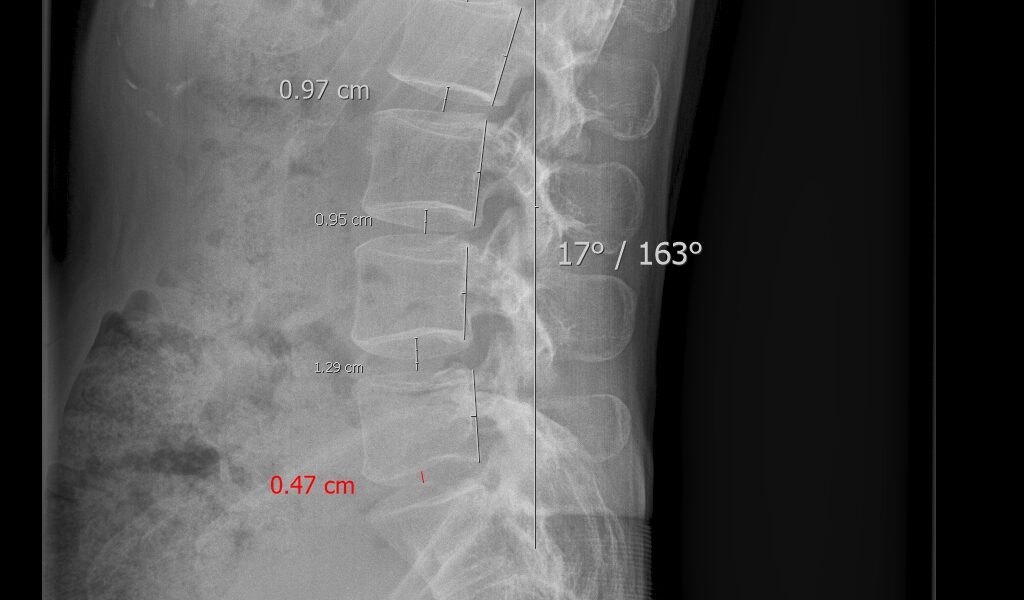By Andrew Siyabalawatte, Jan 2025.
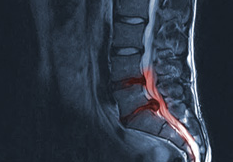
Discectomy Of The Spine
A discectomy is a surgical procedure to remove part or all of the disc sitting between two vertebral (bone) segments in the spine, typically in the lower back or lower neck.
A discectomy is performed to relieve pressure on a spinal nerve caused by the affected herniated (bulging) disc.
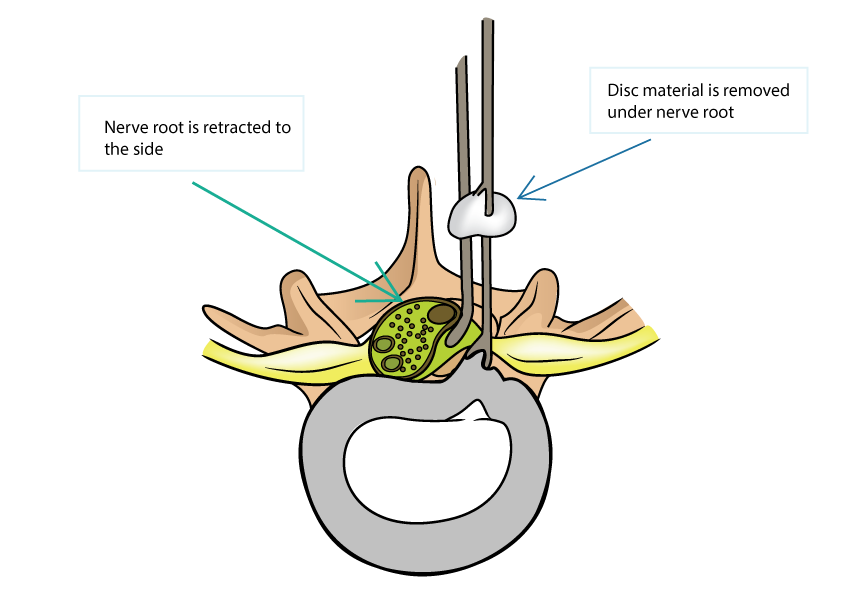
This procedure is particularly indicated when the individual’s daily activity is significantly affected. For example, not being able to sit or sleep. Even though this is expected at the acute stages of injury, it is when the disc is in a chronic state of injury, and often after several months of tolerating the symptoms when the surgery is indicated.
Decompression Of The Spine
Spinal decompression therapy aims to help patients who suffer from debilitating pain due to bulging, degenerating, or herniated discs. It involves using a device to stretch the spine and create space between the vertebrae and spinal discs. Done regularly over time, this decompression method can have lasting positive effects on symptoms and overall posture.
Spinal compression is like a garden hose crushed under a parked car tire. You need to lift the weight and remove the pressure to get relief. This natural, evidence based method is a good alternative to surgical decompression of the spine.
Spine Fusion
Spinal fusion is the surgical procedure to join 2 or more bones (vertebrae) of your spine together permanently. The purpose of spinal fusion is to limit as much movement as possible between the two bones. Once the procedure has taken place, within 3-6 months, the space between the two bone will diminish as the body repairs itself.
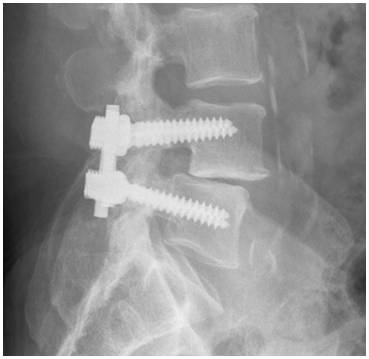
Physiotherapy Is Not The ONLY Option Before Spine Surgery
There is a pathway to follow on the NHS before a discectomy is considered. Many people are given physiotherapy as a first port of call, majority of the time even before a scan. This is a good thing, though if physio does not work, then injections and falling that, surgery. There are other options to consider. Like some hands-on work from a massage therapist, osteopath or chiropractor, which can help with the recovery in the acute or sub-chronic stage of disc injury, by helping you to stabilise your spine and prepare the muscles to support your spine and give it the best opportunity to recover before herniated disc surgery is considered.
Herniated Disc Case
A 42 year old male presented to us with pain and numbness in the left calf and big toe following the sudden onset of lower back pain 6 months beforehand. The lower back pain had settled by the time he visited us. In his words, his quality of life was “zero”. He could not sit, sleep or exercise like he used to. Only standing and cycling was barely manageable, thus that is how he’d get by.
In the 6 months, he had been through physio, with no major change in symptoms and was scheduled for an cortisone injection a week or so following his visit to us. We took him through our unique assessment pathway which includes a postural muscle scan, posture analysis scan and a biomechanical xray –

This posture analysis shows a compensatory posture pattern – reduced lumbar curve and increased thoracic kyphosis, a typical posture adopted to protect the injured disc.
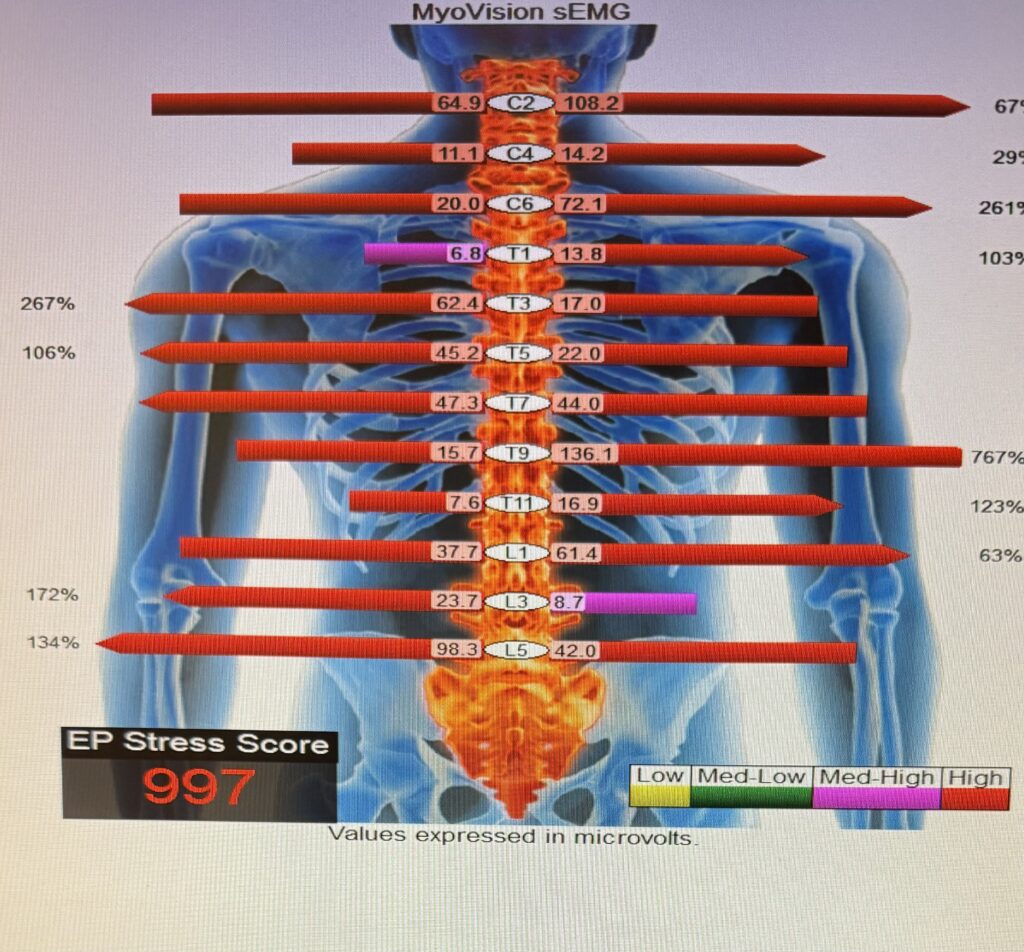
Where values either side should be of a similar reading, His muscle scan shows areas of imbalance in the neck, middle and lower spine which indicates a posture adaptation to protect the injured disc.
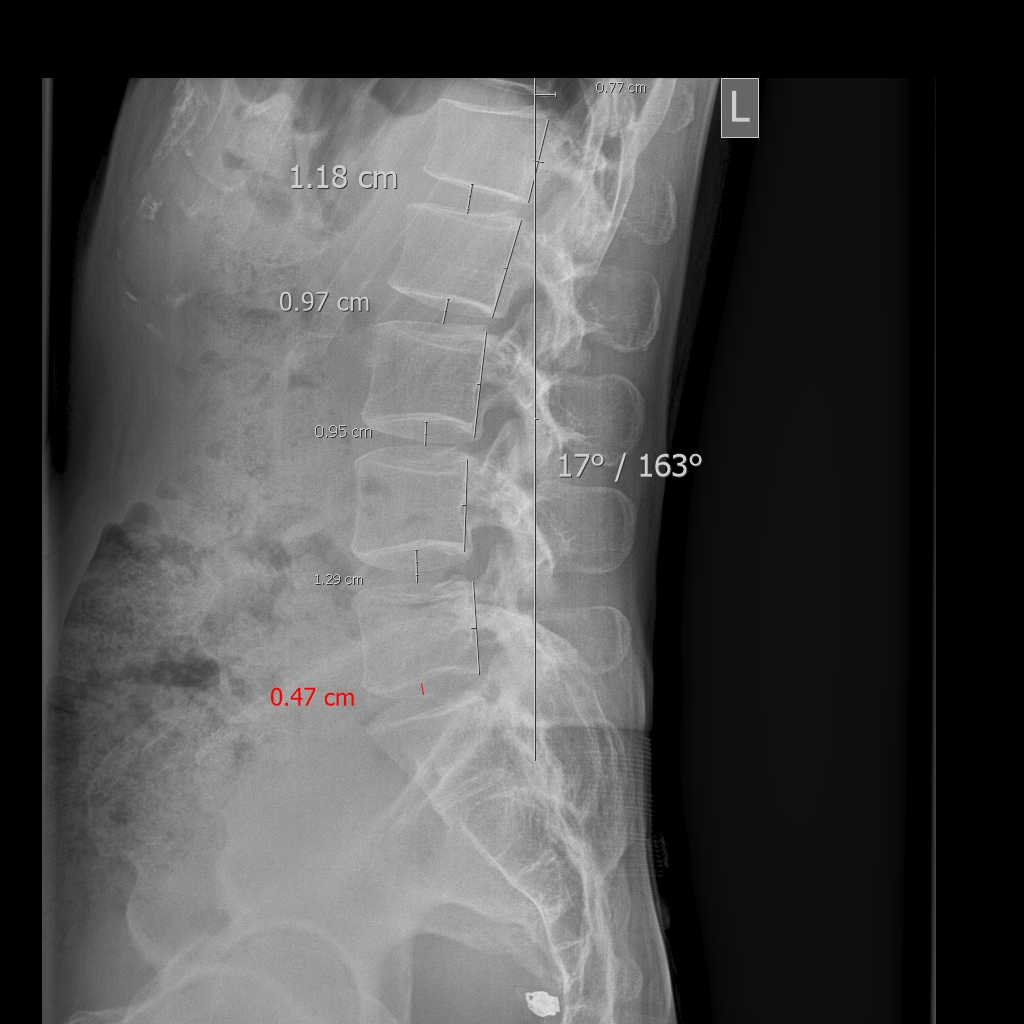
The biomechanical x-ray shows us a “flexed” curve in the lower back, similar to that shown in the posture analysis. What is also visible is the reduced disc spacing between the L5-S1 segment, the potential cause of his symptoms.
What Next?
Once surgery has taken place, what happens next? Some people continue to have symptoms after surgery, or develop symptoms again within a few years of surgery. Recurrent symptoms can be caused by a weakened spine.
The natural model of decompression therapy we offer will help you regain the required strength and flexibility in your spine to manage your environment, without creating the long term stress and damage that occurs without the correct amount of awareness of your posture and your spine health.
Book our unique two step assessment and discover the true cause of your back issues.

